Meet ALMA: Amazing Photos from Giant Radio Telescope
Composite Image of Supernova 1987A
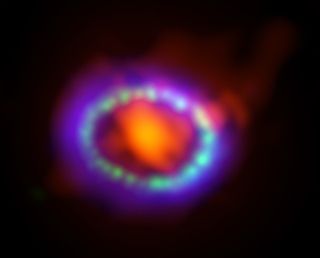
Composite image of supernova 1987A. ALMA data (in red) shows newly formed dust in the center of the remnant. HST (in green) and Chandra (in blue) show the expanding shockwave.[Read the Full Story Here]
Artist's Illustration of Supernova 1987A
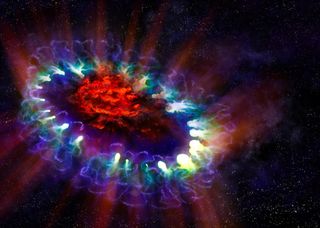
This artist's illustration of supernova 1987A reveals the cold, inner regions of the exploded star's remnants (in red) where tremendous amounts of dust were detected and imaged by ALMA. This inner region is contrasted with the outer shell (lacy white and blue circles), where the energy from the supernova is colliding with the envelope of gas ejected from the star prior to its powerful detonation. [Read the Full Story Here]
ALMA and Hubble Telescope Combined Image
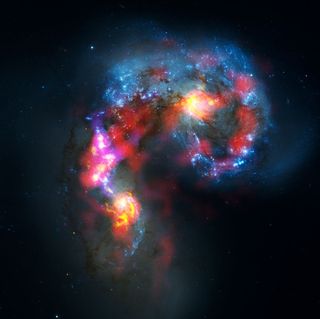
A combined view of the Antennae Galaxies, taken by the ALMA radio telescope array and the Hubble Space Telescope.
Radio Galaxy Centaurus A, as Seen by ALMA
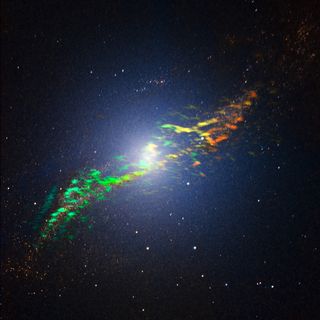
This new image of Centaurus A combines ALMA and near-infrared observations of the massive elliptical radio galaxy. Image released May 31, 2012.
Planet-forming Bridge
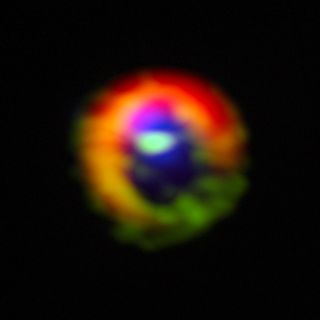
Observations made with the Atacama Large Millimeter/submillimeter Array (ALMA) telescope of the disc of gas and cosmic dust around the young star HD 142527, showing vast streams of gas flowing across the gap in the disc. These are the first direct observations of these streams.
ESO Alma Telescopes and the Milky Way
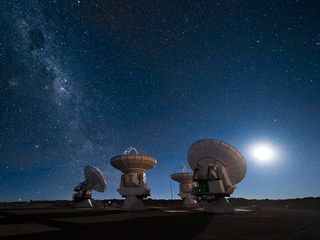
Four of the European Southern Observatory's Atacama Large Millimeter/submillimeter Array (ALMA) antennas gaze up at the night sky. Milky Way is visible at left.
Curious Spiral Spotted by ALMA Around Red Giant Star R Sculptoris
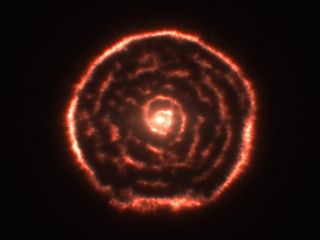
Observations using the Atacama Large Millimeter/submillimeter Array (ALMA) have revealed an unexpected spiral structure in the material around the old star R Sculptoris.
Get the Space.com Newsletter
Breaking space news, the latest updates on rocket launches, skywatching events and more!
Huge Observatory in Andes Takes Shape
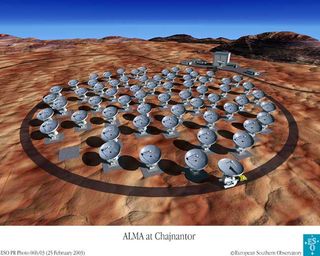
An artist's view of the completed Atacama Large Millimeter Array (ALMA) in Chile's Atacama Desert. Here, the array is arranged in a compact configuration.
ALMA Telescope's First Image
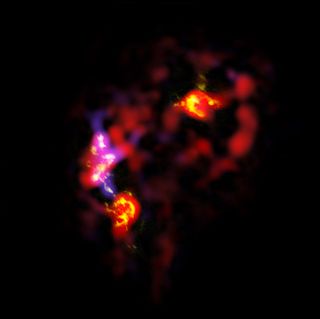
The ALMA radio telescope array in Chile captured this shot of the Antennae Galaxies, which are about 75 million light-years from Earth. This is the first ALMA image to be released to the public.
I'm the Antenna, Catching Vibration
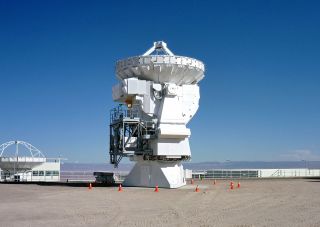
Japan has provided the first of twelve 7-meter antennas to the Atacama Large Millimeter/submillimeter Array (ALMA) observatory in Chile. ALMA will have an array of 50 antennas with 12-meter diameter dishes. The 7-meter antenna is seen here at the ALMA Operations Support Facility (OSF), at an altitude of 2,900 meters in the foothills of the Chilean Andes. Later it will be moved to the plateau of Chajnantor at a 5,000-meter altitude.
ALMA's First European Antenna
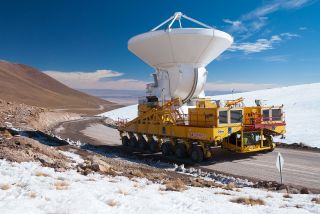
The first European antenna for the Atacama Large Millimeter/submillimeter Array (ALMA) has reached new heights, having been transported to the observatory’s Array Operations Site (AOS) on 27 July 2011.
Join our Space Forums to keep talking space on the latest missions, night sky and more! And if you have a news tip, correction or comment, let us know at: community@space.com.

Space.com is the premier source of space exploration, innovation and astronomy news, chronicling (and celebrating) humanity's ongoing expansion across the final frontier. Originally founded in 1999, Space.com is, and always has been, the passion of writers and editors who are space fans and also trained journalists. Our current news team consists of Editor-in-Chief Tariq Malik; Editor Hanneke Weitering, Senior Space Writer Mike Wall; Senior Writer Meghan Bartels; Senior Writer Chelsea Gohd, Senior Writer Tereza Pultarova and Staff Writer Alexander Cox, focusing on e-commerce. Senior Producer Steve Spaleta oversees our space videos, with Diana Whitcroft as our Social Media Editor.










